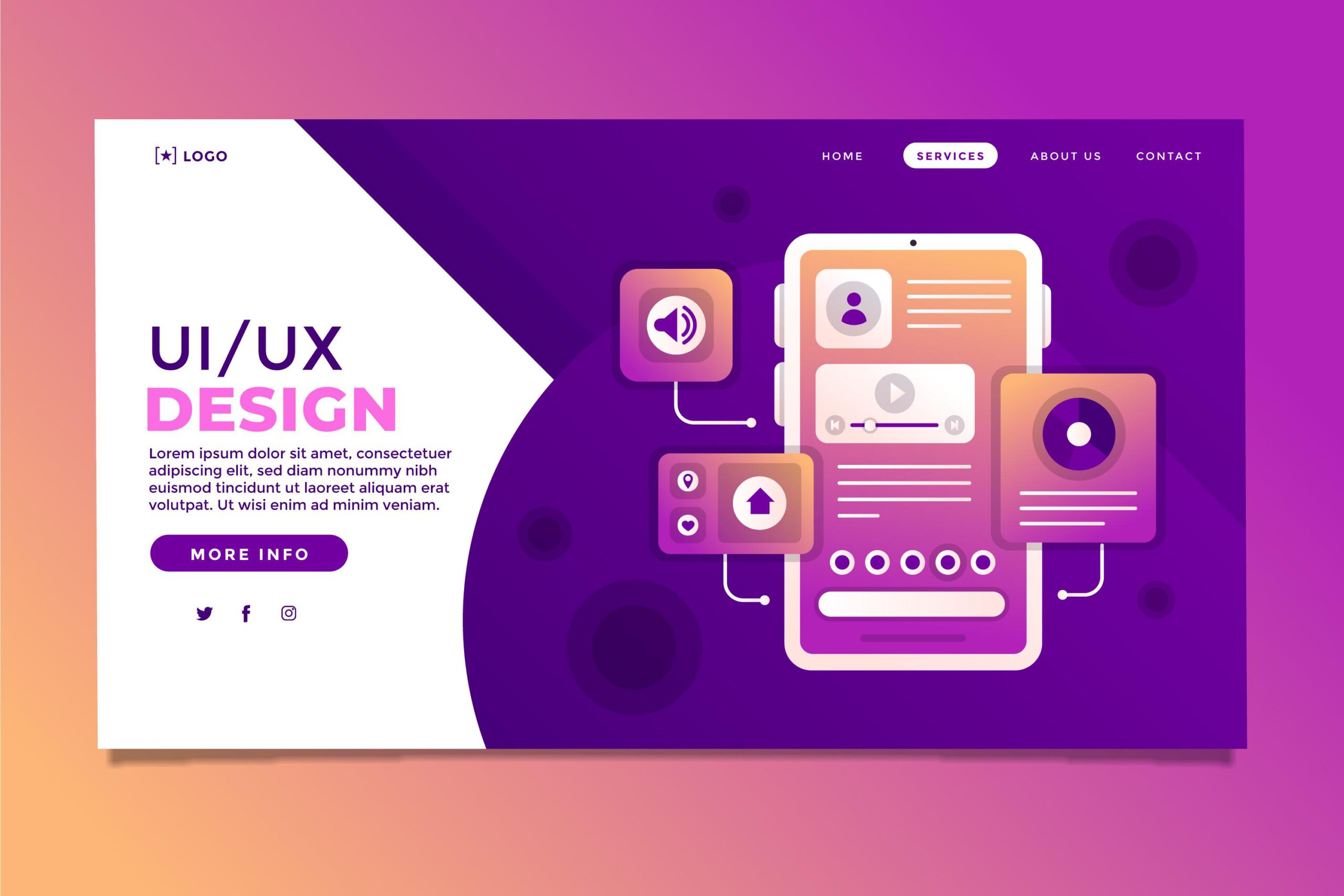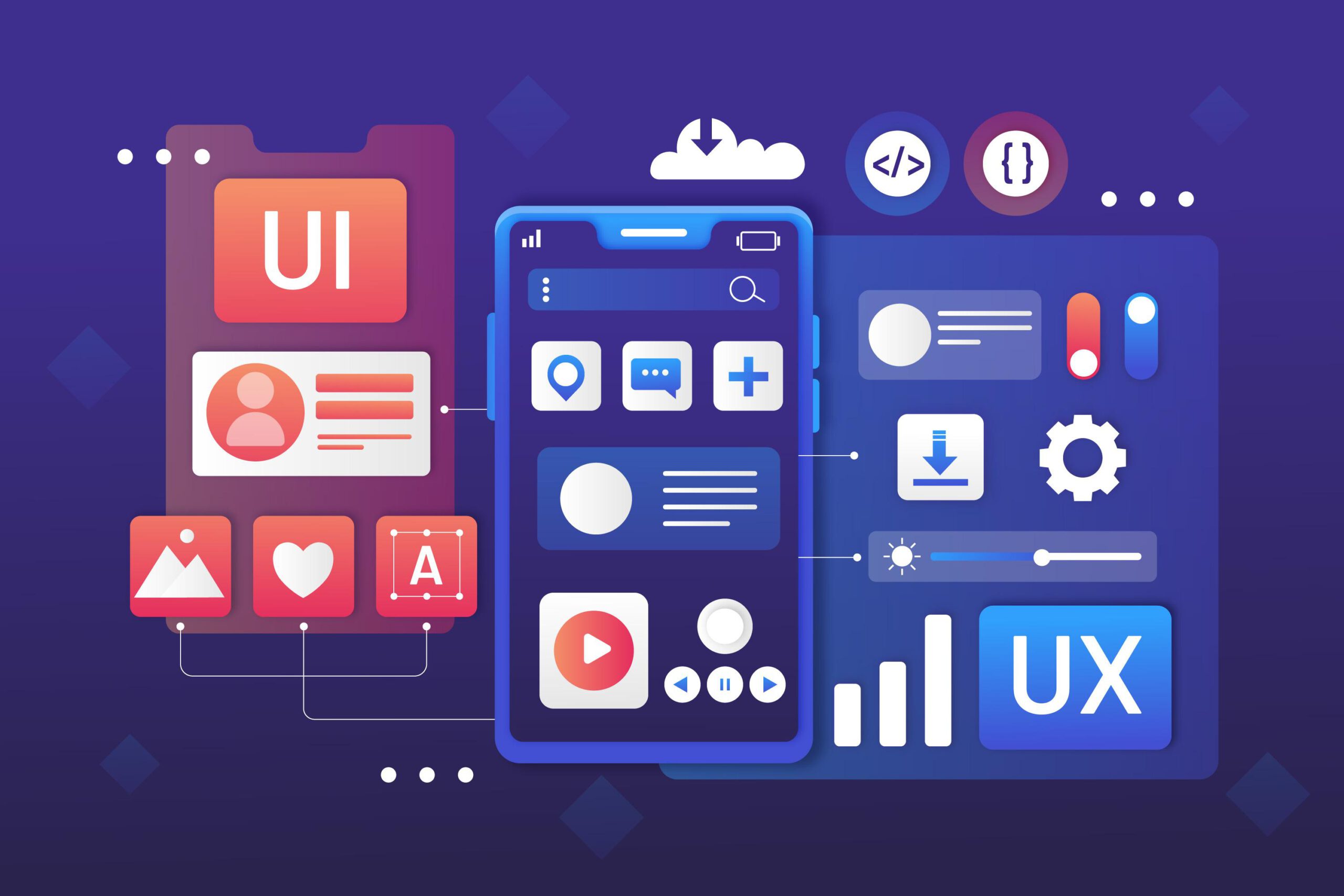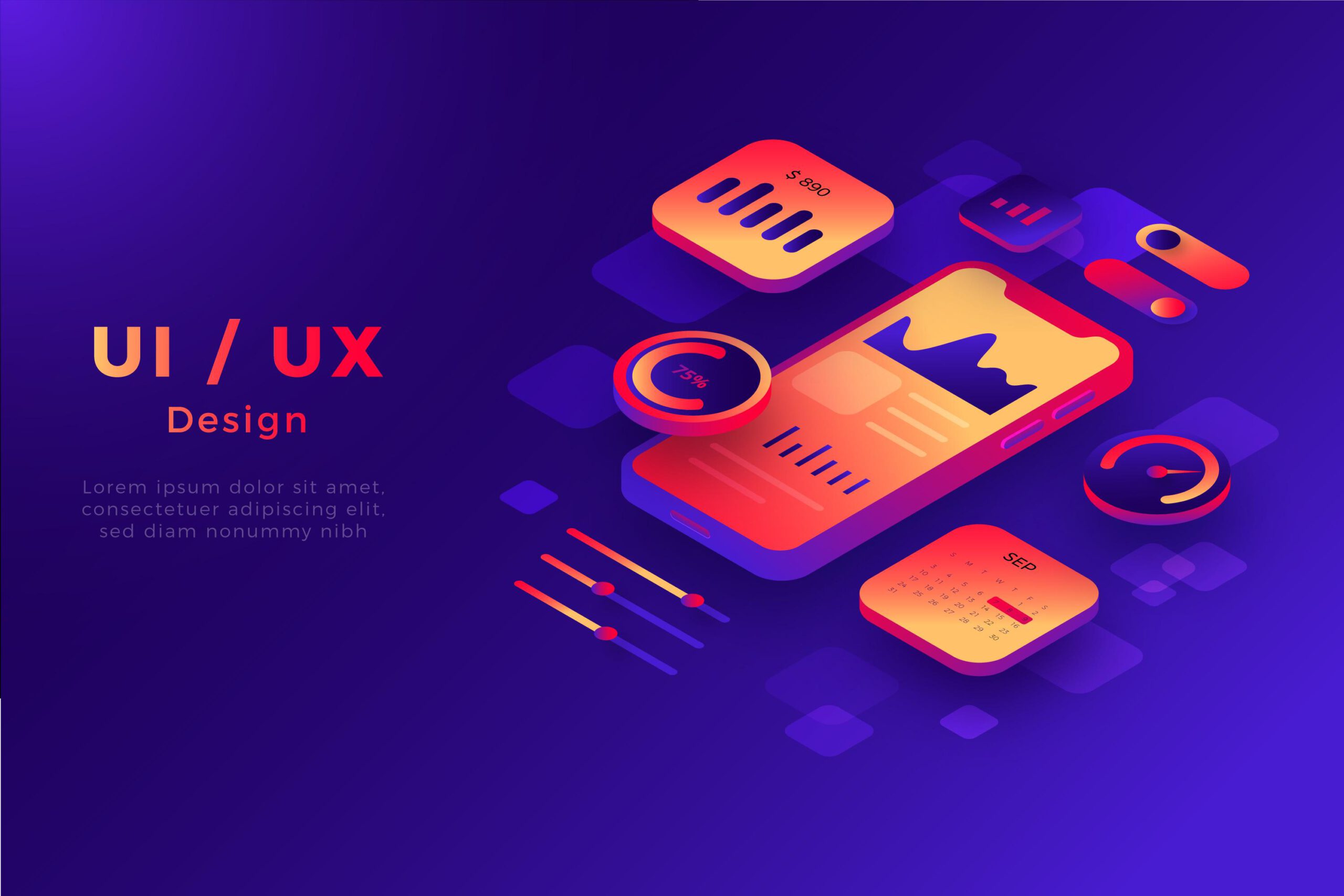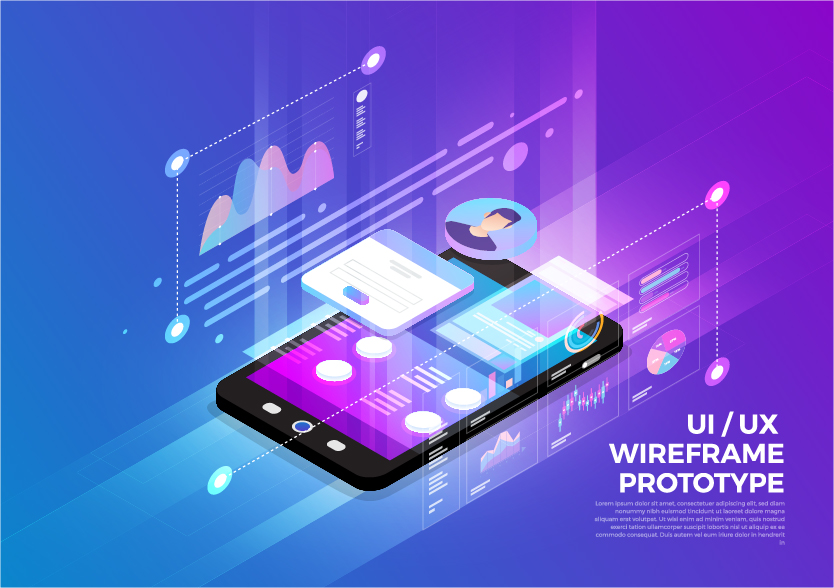Introduction
User experience (UX) is at the heart of advanced web design. As trends evolve, so do the expectations for seamless, engaging, and user-friendly online experiences. UX is no longer just about aesthetics. It encompasses how visitors interact with a site, navigate its features, and ultimately connect with its content. Improving UX helps websites better meet user needs, reduce bounce rates, and drive conversions. Below, we explore practical web design strategies to elevate UX and provide a compelling, modern experience for your visitors. The importance of responsive web design and advanced web design will be explained here.
1. Prioritize Responsive And Mobile-First Design
Mobile internet usage has consistently grown, making it crucial to prioritize responsive, mobile-first designs that provide a cohesive experience across devices. A mobile-first approach ensures that designs scale gracefully, maintaining functionality on smaller screens while offering users a smooth experience on larger screens.
Responsive designs that adapt layouts, images, and buttons to screen sizes improve accessibility and engagement. This approach prevents content from becoming overcrowded or inaccessible and allows users to comfortably access the site on any device, a cornerstone of effective UX in contemporary web design
Understanding Mobile-First Design
Mobile-first design is a design philosophy where you start by designing for the smallest screen sizes and then progressively enhance the experience for larger screens. Since more people now access websites on mobile devices than desktops, this approach ensures that the most critical elements of a site (content, navigation, and usability) work seamlessly on smaller devices before scaling up. It’s not just about squeezing content into a smaller frame. It’s about restructuring and prioritizing what’s important for users on mobile. A well-designed mobile-first site is lightweight, fast-loading, and easy to navigate, helping prevent high bounce rates among mobile users.
Key Principles Of Mobile-First Design
1. Content Prioritization
Identify essential content and features, and make them easily accessible on mobile. This often means trimming unnecessary elements that may clutter the screen.
2. Simplicity In Navigation
Mobile navigation should be concise and easy to use, often with collapsible menus or icons to reduce space usage.
3. Large, Tappable Buttons
Design interactive elements like buttons and links with larger tap targets to make navigation more user-friendly on small screens.
Benefits Of A Mobile-First Approach In Modern Web Design
Mobile-first design enhances user experience by ensuring that sites load faster, display efficiently, and respond quickly on mobile devices. This is particularly advantageous for e-commerce and service-based websites, where mobile traffic often constitutes the majority of visitors. Furthermore, search engines like Google prioritize mobile-friendly sites in search rankings, which directly impacts SEO and visibility.
Technical Strategies For Mobile Optimization
Several technical strategies can improve mobile-first design:
Responsive Grid Systems
These frameworks allow content to be organized in flexible, grid-based layouts that automatically adjust based on screen size.
Media Queries
CSS media queries adjust styles according to screen width, ensuring optimal display on all devices.
Optimized Images And Lazy Loading
Using compressed images and lazy-loading techniques helps improve page speed, which is crucial for mobile performance and overall UX.
Testing And Iteration
Testing is essential in a mobile-first design strategy. Use tools like Google’s Mobile-Friendly Test, real-device testing, and emulators to check how your design performs on different screen sizes. Regularly update your site as mobile trends evolve, ensuring that the user experience remains smooth and modern.
Expanding the mobile-first design approach can significantly enhance a website’s user experience and make it accessible and attractive to a broader audience.
2. Embrace Minimalism For Clean, Uncluttered Design

What Is Minimalism In Modern Web Design ?
Minimalism in web design emphasizes simplicity, focusing on essential elements to create a clean and user-friendly interface. It involves reducing visual clutter, using only necessary features, and prioritizing function over form. By eliminating distractions and unnecessary features, minimalism helps users focus on the primary content and tasks, enhancing their overall experience.
Key Aspects Of Minimalist Web Design
- White Space: Also known as negative space, white space is the empty space around content and elements on a page. It gives content room to breathe, making pages look more organized and reducing visual strain. White space also enhances readability and creates a balanced layout.
- Limited Color Palette: Minimalist designs often use a restrained color scheme with one or two main colors and neutral shades to prevent overstimulation. Limited colors contribute to a calm aesthetic and help draw attention to important elements, such as calls-to-action (CTAs).
- Simple Typography: Minimalist web designs favor clear, readable fonts without excessive styles or embellishments. Clear typography is easier to read and complements the straightforward style of minimalist layouts.
Benefits Of Embracing Minimalism In Modern Web Design
Minimalist design not only makes websites look modern and sophisticated but also improves performance. By reducing elements, it often results in faster load times and a cleaner, more intuitive user experience. Users can quickly locate key information without distractions, resulting in a more enjoyable experience.
Implementing Minimalism Effectively
To effectively apply minimalism, focus on prioritizing content, using visual hierarchy, and removing unnecessary components. For example, consider using only essential navigation links, simplifying animations, and avoiding heavy graphic elements. Use contrast and bold typography selectively to highlight the most important information without adding extra elements that could detract from the clean design.
3. Use Bold Typography And Vibrant Color Schemes For Impact
Importance Of Bold Typography In Modern Web Design
Bold typography is a powerful tool in modern web design, allowing designers to create a distinct visual hierarchy and direct the viewer’s focus. Larger, bolder fonts grab attention, making headings and important messages more noticeable. Bold typography is particularly effective for key headlines, subheadings, and calls-to-action (CTAs), helping guide users toward essential content without needing additional visual clutter.
Choosing The Right Typeface
Choosing the right typeface is critical to ensure readability while enhancing a brand’s aesthetic. Sans-serif fonts, for example, are often used for their clean, modern look, while serif fonts can convey a more classic, trustworthy feel. Regardless of the style, the font should align with the brand’s identity and enhance the website’s overall tone. Many websites use variable fonts that can be adjusted for weight and size, offering flexibility to create emphasis as needed without adding new fonts that can slow down page load times.
Leveraging Vibrant Color Schemes For Emotional Impact
Color is a core element in setting the mood and attracting the right audience. Vibrant colors are particularly effective in evoking emotions, whether it’s creating a sense of excitement, calmness, or trust. Strategic use of high-contrast colors helps CTAs and important messages stand out, while vibrant accents can guide users through the website’s layout. However, it’s essential to keep accessibility in mind; high-contrast color combinations should be used to ensure readability and usability for all users.
Tips for Effective Use Of Bold Typography And Color
- Limit Color Use: While vibrant colors are impactful, using too many can overwhelm users. Stick to one or two accent colors that align with the brand and provide enough contrast for readability.
- Pair Bold Fonts with Ample White Space: When using bold fonts, ample white space around them helps prevent the design from feeling cluttered. This approach also enhances readability and draws attention to important information.
- Apply Colors Consistently Across Elements: For a cohesive design, use the chosen color scheme across buttons, links, and headings consistently. This helps users associate certain colors with clickable actions and keeps the design visually unified.
Conclusion
Bold typography and vibrant colors are effective elements in creating visually engaging and memorable web designs. By using these elements strategically and ensuring they align with the brand’s identity, designers can craft an experience that is not only aesthetically appealing but also functional and accessible.
4. Optimize Page Load Speed In Modern Web Design

Why Page Load Speed Matters
Page load speed directly impacts user experience, SEO rankings, and overall engagement. Slow-loading websites frustrate users, leading to higher bounce rates and fewer conversions. Studies show that even a one-second delay can decrease customer satisfaction and significantly reduce conversion rates, making speed optimization a top priority for any modern website.
Techniques For Optimizing Page Load Speed
- Optimize Images: Large image files slow down websites, so compressing images without sacrificing quality is crucial. Tools like TinyPNG or image formats like WebP reduce file sizes while retaining visual clarity, improving load times significantly.
- Enable Browser Caching: Caching stores elements like HTML, CSS, and JavaScript files in a user’s browser, allowing the website to load faster on return visits. This minimizes data retrieval times and reduces server strain, improving both initial and repeat load speeds.
- Use a Content Delivery Network (CDN): CDNs distribute website content across global servers, allowing users to load resources from servers closest to them. This can significantly decrease loading times for users in different geographic locations, creating a faster, more consistent experience.
- Minify CSS, JavaScript, and HTML: Minification removes unnecessary characters, spaces, and comments from code, reducing file sizes and optimizing load speed. Tools like CSS Minify and JavaScript Minify help ensure that code is clean, lightweight, and efficient.
Testing Page Speed
Regular testing of page load speed is essential to identify and address any performance issues. Tools like Google PageSpeed Insights and GTmetrix provide insights into what might be slowing your site down and suggest specific improvements. Testing allows you to measure improvements over time, helping to ensure that your site consistently performs well.
By implementing these strategies, you can optimize page speed, enhance UX, and increase the likelihood that visitors will stay on your site and engage with your content.
5. Implement Intuitive Navigation In Modern Web Design
Why Intuitive Navigation Matters
Intuitive navigation is fundamental to a positive user experience because it enables visitors to effortlessly find the information they’re seeking. When navigation is clear and straightforward, users can seamlessly explore a website, reducing frustration and improving retention rates. Effective navigation not only increases user satisfaction but also plays a role in SEO, as search engines reward sites that offer accessible and user-friendly structures. It is a must have in modern web design.
Key Elements Of Intuitive Navigation
- Simplified Menu Structure: Keep the primary menu clear and concise, with 5-7 main categories to avoid overwhelming users. Each menu item should use simple, recognizable terms that directly communicate the content of the linked pages.
- Sticky or Fixed Navigation Bars: These allow the navigation bar to stay visible as users scroll, enabling quick access to other pages without needing to scroll back up.
- Breadcrumbs: Breadcrumb navigation shows users their path through the site, improving orientation, especially on multi-level or content-heavy websites.
- Clear Call-to-Action (CTA) Buttons: Highlighted CTAs guide users toward key actions, like “Contact Us” or “Get Started,” helping users navigate while also boosting conversions.
Enhancing Mobile Navigation
Mobile-friendly navigation is crucial for usability, as mobile users often face difficulties with complex menus. Using icons like the “hamburger” menu, ensuring larger tap areas, and minimizing the number of clicks to reach information can help streamline the navigation experience for mobile users, making the website accessible and efficient on any device.
By implementing these intuitive navigation practices, websites can reduce bounce rates, enhance user satisfaction, and encourage visitors to explore more content. This is an important element in contemporary web design.
6. Leverage Micro-Interactions For Engagement

What Are Micro-Interactions ?
Micro-interactions are subtle design elements that respond to user actions, providing instant feedback to enhance engagement. These small animations or visual effects often go unnoticed on a conscious level, but they play a significant role in guiding users, confirming their actions, and creating a sense of responsiveness on a website. Examples include a slight color change on a button hover, a loading animation, or a heart icon that animates when clicked. Micro-interactions are often used in modern web design.
Benefits Of Using Micro-Interactions
Micro-interactions can make a site feel interactive and alive, fostering a deeper connection between the user and the website. These design features improve usability by subtly indicating to users what actions are available or what the result of their interaction will be. By making experiences intuitive and enjoyable, micro-interactions reduce confusion and add polish, often increasing user satisfaction and encouraging longer time on site.
Types Of Micro-Interactions To Consider
- Hover Effects: Hover animations on buttons or links can signal that an element is clickable, guiding users to engage with CTAs and interactive content.
- Form Feedback: Providing visual cues for form fields – such as changing the border color when a field is correctly or incorrectly filled – can reduce user errors and improve completion rates.
- Loading Indicators: Small animations or icons that display while content is loading help manage user expectations, especially for tasks that take longer, like file uploads or content transitions.
- Animated Notifications: Subtle animations for pop-up notifications or alerts make them feel less intrusive while still catching the user’s attention.
Best Practices For Micro-Interactions
For effective micro-interactions, keep animations subtle and avoid overwhelming users. Each interaction should add value without creating unnecessary distractions. Consistency is also key. Using the same type of interaction across similar elements builds familiarity and confidence. Additionally, ensure that micro-interactions load smoothly, as any delay could detract from the intended user experience.
Incorporating micro-interactions effectively can elevate a website’s engagement and usability, making it more enjoyable for users and encouraging continued interaction. Advanced web design will profit enormously from these micro-interactions.
7. Focus On Accessibility And Inclusivity In Modern Web Design
The Importance Of Accessibility
Accessibility in web design ensures that people with disabilities can navigate and interact with your website effectively. This includes users with visual, auditory, motor, or cognitive impairments. An accessible website not only meets legal requirements, such as the Web Content Accessibility Guidelines (WCAG), but also creates a welcoming experience for all users, enhancing your website’s usability and reach. Accessibility and inclusivity in modern web design are things which are highly prioritized.
Core Principles Of Inclusive Design
- Keyboard Navigation: Many users rely on keyboard navigation, especially those who cannot use a mouse. Ensuring that all interactive elements (like buttons, forms, and links) are accessible via keyboard is essential. Adding visual indicators, such as focus outlines, also helps users see where they are on the page.
- Alternative Text For Images: Providing alt text for images is crucial for screen readers used by visually impaired individuals. Alt text describes the content or function of an image, ensuring that those who cannot see it still understand its purpose in the context of the page.
- Color Contrast: High color contrast between text and background makes content more readable for users with visual impairments, including color blindness. Selecting colors with sufficient contrast helps all users read content clearly and reduces eye strain.
- Clear, Concise Language: Using simple language improves accessibility for individuals with cognitive impairments and benefits all readers by making content easier to understand. Avoid jargon, and ensure that complex concepts are broken down into easily digestible parts.
Benefits Of An Accessible Website
Creating an accessible and inclusive website broadens your audience reach, improves SEO, and enhances user satisfaction. It demonstrates a commitment to inclusivity and builds a positive reputation, as users feel valued and respected. Accessible sites often perform better in search engine rankings, as search engines prioritize user-friendly, accessible content. Embracing accessibility as a core part of web design is a win-win. It supports both business goals and social responsibility and helps a lot in contemporary web design.
8. Encourage Engagement With Visual Hierarchy And Readability

The Role Of Visual Hierarchy
Visual hierarchy is the arrangement of elements in a way that guides the viewer’s attention. It emphasizes the most important content first. Effective visual hierarchy uses size, color, contrast, and positioning to lead users through the page. It ensures that they engage with key information. For example, headlines are often larger and bolder, attracting attention immediately. The supporting text is smaller and more subtly styled.
Techniques For Establishing Visual Hierarchy
- Use Of Headings And Subheadings: Headings structure content and make it scannable, allowing readers to quickly grasp the main points and find relevant sections. Consistent use of H1, H2, and H3 tags also improves SEO, as search engines recognize the importance of content based on heading tags.
- Color And Contrast: High-contrast colors draw attention, especially when used sparingly on calls-to-action (CTAs) or important messages. Using a cohesive color scheme with accent colors for emphasis helps users focus on what matters most without overwhelming the senses.
- Whitespace: Ample whitespace, or negative space, gives each element room to stand out, enhancing clarity and readability. Whitespace prevents clutter, creating a clean look that guides the viewer’s eyes through the content in an organized manner.
Enhancing Readability
Readability ensures that users can easily process and understand content. Short paragraphs, bullet points, and simple language make the reading experience more pleasant, especially on mobile devices. Using legible fonts and sufficient line spacing also improves readability, keeping readers engaged and reducing eye strain.
Benefits Of Visual Hierarchy And Readability
A well-structured visual hierarchy, combined with high readability, not only attracts user attention but also makes the content easier to digest. This approach keeps readers on the page longer, enhances their engagement with the content. This also increases the likelihood that users will take desired actions, such as sharing the post or clicking on CTAs. By making content visually accessible and easy to follow, websites can build trust and provide a more satisfying user experience.
9. Add Interactive Elements In Modern Web Design To Boost Engagement
Why Interactive Elements Matter
Interactive elements make websites more engaging by inviting users to actively participate rather than passively consuming content. These elements can transform a static experience into a dynamic one, increasing user engagement, encouraging return visits. This often improves conversion rates. Interactive content allows users to explore, click, and react. This leads to longer time spent on the site and a stronger connection with the brand.
Types Of Interactive Elements To Consider
- Sliders And Carousels: Sliders display multiple images, videos, or text snippets in a rotating format, often used on homepages to showcase products or services. They allow users to interactively browse without overwhelming them with all the information at once.
- Quizzes And Polls: Quizzes and polls personalize the experience and give users a reason to stay longer on the page. They can also provide insights into user preferences and behaviors, which can inform future content strategies.
- Hover Effects: Hover animations add subtle feedback when users move their cursor over a clickable item, like buttons or images. These effects make the website feel responsive, providing visual cues that encourage exploration.
- Product Demos And Interactive Infographics: For e-commerce or informational sites, product demos and interactive infographics allow users to explore features or data interactively, which enhances understanding and encourages conversions.
Best Practices For Adding Interactive Elements
While interactive elements enhance engagement, they should be used strategically to avoid cluttering the page. Prioritize elements that align with user goals and reinforce the purpose of the page. Ensure these features are optimized for mobile devices, as mobile users may have different interaction capabilities. Clear, intuitive functionality is essential to provide a seamless experience that enriches rather than complicates the user journey.
Interactive elements can make a website effective, inviting users to stay, engage, and take action.
10. Test And Iterate For Continuous Improvement


1 thought on “Modern Web Design For Better UX”